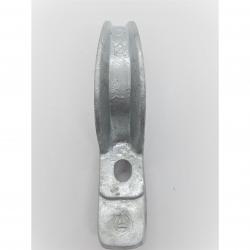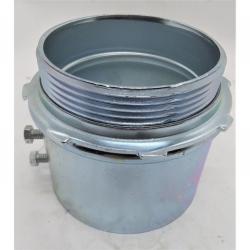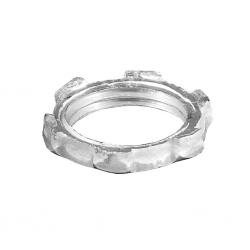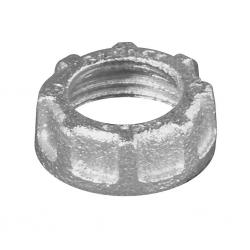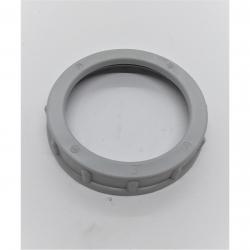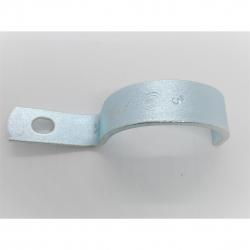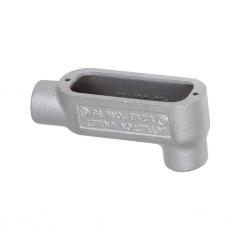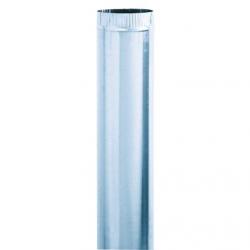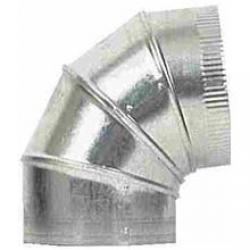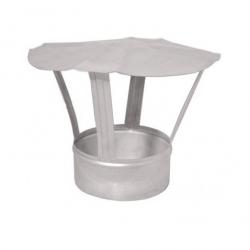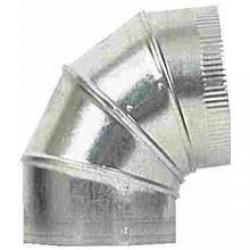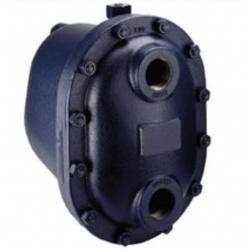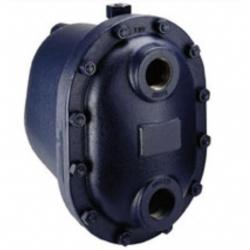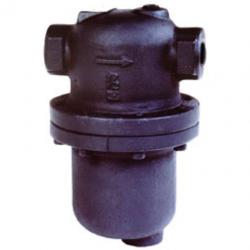Appleton
Armstrong International
View:
Active Filters :
- Brand: Armstrong International Appleton Lukjan Metal Products Inc
- Alt. Size: 3"
Part #:303321
- Appleton and O-Z/Gedney offer ETP 5000S Series steel EMT set screw couplings. They are used to ground and secure EMT raceway sections together.
$
15.79
Qty:
Part #:304002
- Appleton and O-Z/Gedney K-clamps are designed to secure rigid metal conduit IMC or EMT. They can be used across parallel or perpendicular to beam channel and angle supports.
$
15.97
Qty:
Part #:300863
- Appleton and O-Z/Gedney K-clamps are designed to secure rigid metal conduit IMC or EMT. They can be used across parallel or perpendicular to beam channel and angle supports
$
6.01
Qty:
Part #:300070
- Appleton HUB-B threaded conduit hubs with bonding screw are general purpose fittings designed for RMC and IMC. They provide threaded terminations in sheet metal enclosures and are suitable for service entrances.
$
96.78
Qty:
Part #:302545
- Appleton and O-Z/Gedney offer ETP 4000S Series steel EMT set screw connectors. They are used to ground and secure EMT raceways to boxes and enclosures. The 4000S Series have a male NPS threaded hub and are available with or without an insulated throat.
$
20.32
Qty:
Part #:306955
- Appleton and O-Z/Gedney rigid conduit and IMC locknuts are used to secure and ground conduits and fittings to enclosures and prevents loosening due to vibration or motion. They are available in plain gasketed and bonding styles
$
11.78
Qty:
Part #:306972
- Appleton and O-Z/Gedney conduit bushings are used with a locknut to terminate rigid metal conduit or IMC conduit to a box or enclosure. They provide a smooth pulling surface for wires.
$
12.64
Qty:
Part #:306986
- Appleton and O-Z/Gedney conduit bushings are used with a locknut to terminate rigid metal conduit or IMC conduit to a box or enclosure. They provide a smooth pulling surface for wires.
$
7.12
Qty:
Part #:307073
- Appleton and O-Z/Gedney threaded enlargers are used to adapt an outlet hole to the next larger size of conduit. The offset nipples provide box to box connection of knockouts and allows misaligned knockout connection by rolling the offset nipple until aligned with each knockout. Bushed nipples are used through knockouts to connect box to conduit coupling. They can be used with a locknut to connect two boxes side by side or back to back or to connect fixture housings and continuous runs.
$
32.49
Qty:
Part #:307126
- O-Z/Gedney threaded three piece couplings join two lengths of conduit when neither can be turned. Elbows provide a 90 change of direction in a conduit run. Gasket elbows also provide a compact wire pulling point.
$
221.69
Qty:
Part #:307356
- Appleton offers beam clamps straps clamps and clamp backs for rigid metal conduit or imc. Beam clamps provide support for conduit hanging systems. Two-hole straps are used to support rigid metal conduit and IMC. Clamp backs provide spacing from mounting surfaces when they are used with pipe clamps.
$
8.70
Qty:
Part #:307981
- Appleton liquidtight STF Series connectors with threaded hubs are female ST Series connectors. They are designed to be used when making connection from liquidtight flexible metal conduit to threaded rigid conduit and IMC. The compact design results in a connector that offers a small turning radius.
$
347.99
Qty:
Part #:308322
- Appleton Form 35 Malleable Iron Conduit Outlet Bodies Covers and Gaskets are used to connect and change direction of conduit runs. In addition to making bends in a conduit system they allow connections for branch runs. These conduit bodies serve as pulling fittings and permit access to conductors for splicing and maintenance.
$
285.78
Qty:
Part #:305172
- Appleton RB Series reducers are explosionproof and dust-ignitionproof. They are designed to reduce conduit entries to a smaller size and are used in threaded rigid and IMC conduit systems.
$
55.63
Qty:
Part #:501-D17205
- Float and Thermostatic (F&T) Steam TrapsThe More Your Steam Pressure Varies, The More You Need Armstrong F&T TrapsWhen steam pressure may vary from maximum steam supply pressure to vacuum, Armstrong F&Ts are your most energy-efficient choice. Our line of F&Ts brings Armstrong performance, dependability and long life to trapping services requiring continuous drainage with high air venting capacity. Thanks to separate orifices for condensate and air, they provide continuous condensate drainage and air venting-even under conditions of zero pressure.
All the benefits detailed here have been designed into Armstrong F&Ts through long experience in the manufacture of pressure float-type traps. They assure you of optimum operating efficiency for long periods with minimum trouble.
How they work
Float and thermostatic traps are mechanical units that operate on both density and temperature principles. The float valve operates on the density principle. A level connects the ball float to the valve and seat. Once condensate reaches a certain level in the trap, the float rises, opening the orifice and draining condensate. A water seal formed by the condensate prevents live steam loss.
Since the discharge valve is under water, it is not capable of venting air and non-condensables. When the accumulation of air and con-condensable gases causes a significant temperature drop, a thermostatic air vent in the top of the trap discharges them. The thermostatic vent opens at a temperature a few degrees below saturation, so it's able to handle a large volume of air-through an entirely separate orifice-but at a slightly reduced temperature.
Built as tough as the jobs they do
Armstrong float and thermostatic traps are unique in their super heavy duty construction. Armstrong uses high quality ASTM A48 Class 30 cast iron or ASTM A216 WCB cast steel-normally found in pressure vessels rated to 250 psi (17 bar) or 465 psi (32 bar). Internal mechanisms are made from stainless steel and are heavily reinforced. No brass cotter pins here. Valves and seats are stainless steel, hardened, ground and lapped to withstand the erosive forces of flashing condensate.
Why go to all this trouble for traps normally recommended for low-pressure, modulating service? The operative word here is modulating. Modulating pressures mean widely varying loads, thermal cycling and high air and non-condensable gas loads.
In other words tough service. Inferior, lightweight construction in this kind of service is a mistake waiting to happen. Trap failures on modulating pressure may lead to water hammer, corrosion and even damage to heat exchangers.
Armstrong's published capacities are based on actual measurements of traps handling hot, flashing condensate. Competitive F&Ts may utilize theoretical calculated capacities. Armstrong uses its own steam lab to give you actual capacity-especially important on high-capacity traps such as those in our ultra-capacity line. Not only does Armstrong offer super heavy duty construction for long life and reliability, but we also supply the data to back up performance. Here's a simple, easy-to-remember summary The more your pressure varies, the more you need Armstrong F&Ts.
Qty:
Armstrong 250MS12 3in SW 1-7/8in Orifice Cast Iron Float & Thermostatic, Same Side Connection D17210
- Float and Thermostatic (F&T) Steam TrapsThe More Your Steam Pressure Varies, The More You Need Armstrong F&T TrapsWhen steam pressure may vary from maximum steam supply pressure to vacuum, Armstrong F&Ts are your most energy-efficient choice. Our line of F&Ts brings Armstrong performance, dependability and long life to trapping services requiring continuous drainage with high air venting capacity. Thanks to separate orifices for condensate and air, they provide continuous condensate drainage and air venting-even under conditions of zero pressure.
All the benefits detailed here have been designed into Armstrong F&Ts through long experience in the manufacture of pressure float-type traps. They assure you of optimum operating efficiency for long periods with minimum trouble.
How they work
Float and thermostatic traps are mechanical units that operate on both density and temperature principles. The float valve operates on the density principle. A level connects the ball float to the valve and seat. Once condensate reaches a certain level in the trap, the float rises, opening the orifice and draining condensate. A water seal formed by the condensate prevents live steam loss.
Since the discharge valve is under water, it is not capable of venting air and non-condensables. When the accumulation of air and con-condensable gases causes a significant temperature drop, a thermostatic air vent in the top of the trap discharges them. The thermostatic vent opens at a temperature a few degrees below saturation, so it's able to handle a large volume of air-through an entirely separate orifice-but at a slightly reduced temperature.
Built as tough as the jobs they do
Armstrong float and thermostatic traps are unique in their super heavy duty construction. Armstrong uses high quality ASTM A48 Class 30 cast iron or ASTM A216 WCB cast steel-normally found in pressure vessels rated to 250 psi (17 bar) or 465 psi (32 bar). Internal mechanisms are made from stainless steel and are heavily reinforced. No brass cotter pins here. Valves and seats are stainless steel, hardened, ground and lapped to withstand the erosive forces of flashing condensate.
Why go to all this trouble for traps normally recommended for low-pressure, modulating service? The operative word here is modulating. Modulating pressures mean widely varying loads, thermal cycling and high air and non-condensable gas loads.
In other words tough service. Inferior, lightweight construction in this kind of service is a mistake waiting to happen. Trap failures on modulating pressure may lead to water hammer, corrosion and even damage to heat exchangers.
Armstrong's published capacities are based on actual measurements of traps handling hot, flashing condensate. Competitive F&Ts may utilize theoretical calculated capacities. Armstrong uses its own steam lab to give you actual capacity-especially important on high-capacity traps such as those in our ultra-capacity line. Not only does Armstrong offer super heavy duty construction for long life and reliability, but we also supply the data to back up performance. Here's a simple, easy-to-remember summary The more your pressure varies, the more you need Armstrong F&Ts.
Qty:
Part #:501-D25977
- DS Series In-Line Condensate SeparatorsDuctile Iron Drain SeparatorCondensate in steam and air piping reduces thermal efficiency, causes water hammer, corrodes equipment such as valves and pipes, and causes other problems.
In-line (drain) separators DS-1, DS-2, DS-3, and DS-4 separate condensate efficiently by using the centrifugal force of steam or air created by introducing it into a specifically shaped path. Because of the simple structure of the drain separators, pressure loss is minimized, enabling clean, dry steam or air to be fed to equipment.
When steam or air flow enters the drain separator, centrifugal force is generated in the fluid because of the devices internal structural design. The fluid drains along the wall because of the difference in specific gravity with steam or air, eventually striking the baffle. The baffle guides the fluid to the drain outlet and to the trap, which drains it. As a result, small dirt particles and condensate are separated and removed from the system through the bottom drain.
• Cyclone structure maximizes liquid separation efficiency
• Pressure loss is extremely low
• No moving parts means no breakdowns
Qty:
Displaying: 1 - 24 of 40 Matching Items






